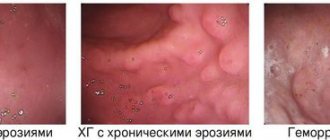Most people easily identify throat problems. Everyone is able to recognize pain, cough or hoarseness. But not everyone thinks about the reasons for such manifestations. With laryngitis, the mucous membrane of the larynx becomes inflamed, which leads to a serious change in the voice, hoarseness and hoarseness develop. The condition is accompanied by a feeling of dryness, itching and a dry cough. Almost every person on Earth has encountered an acute form of laryngitis1.
Most often, the acute form of laryngitis occurs against the background of a respiratory disease, viral or bacterial. The body usually needs seven to ten days to overcome the manifestations of laryngitis. If, after all the typical symptoms of an acute respiratory viral infection or cold have disappeared, your throat continues to hurt, coughing and hoarseness are tormented, then it may develop into a chronic form1.
The cause of laryngitis is not only a variety of respiratory infections. Heavy load on the vocal apparatus, prolonged exposure to high or low temperatures, allergic reactions, chronic manifestations of respiratory diseases, smoking and particularly harmful working conditions - there are many reasons and you should know about them2.
Common symptoms of laryngitis
The general symptoms of laryngitis are the same in adults and children. With a respiratory infection, in most cases, inflammation affects several parts of the respiratory system, so laryngitis is often accompanied by pharyngitis or tracheitis.
The following signs of the disease almost always appear:2
- Pain when swallowing and discomfort in the throat (dryness, soreness);
- Voice changes and hoarseness;
- Difficulty breathing;
- Enlarged lymph nodes in the neck, the touch of which is quite painful;
- Cough of various types, from mild to severe, from dry to wet, at night and during the day.
In addition to the “standard” symptoms of laryngitis, it is possible to add classic symptoms of ARVI and signs of complications:
- An increase in body temperature, from minor with a common cold to significant with serious infectious diseases;
- Obvious difficulty breathing and sensation of a lump in the throat;
- Swallowing dysfunction;
- Intoxication of the body - headaches, nausea, poor general health, muscle pain and other symptoms;
- Complications in the nasopharynx - congestion and mucus secretion (runny nose);
- Complications in which the cough is accompanied by blood inclusions.
Clinical picture
As a rule, pathology manifests itself gradually. At first there are no symptoms. Subsequently, weakness, malaise, and possible fever are noted.
Unpleasant sensations occur in the larynx area. These are pain, burning, tickling, tickling and dryness. Afterwards a cough is registered, at first it is dry, then a copious amount of productive sputum appears. It may contain mucus, as well as admixtures of pus and sometimes blood.
As a result, the larynx becomes very inflamed, swollen, and becomes bright red. The voice shrinks, becomes hoarse, low and sometimes can disappear completely.
Forms and types of laryngitis
As already mentioned, doctors distinguish two main forms of laryngitis - acute and chronic. In addition to the form, there is a rich variety of types, depending on location, symptoms and causes.
In most cases, a person deals with the catarrhal form of acute laryngitis, but there are exceptions and only high-quality diagnostics will help identify the true form1:
- Catarrhal laryngitis. A common type of inflammation of the mucous membrane, which is characterized by the usual symptoms of laryngitis. The laryngeal mucosa becomes inflamed, usually due to a viral respiratory infection. The blood vessels swell and fill with blood, hence the red tint of a sore throat.
- Hemorrhagic laryngitis. A very rare form of acute laryngitis, which develops against the background of influenza, during pregnancy, or is a consequence of problems with the circulatory system or liver. A large array of hemorrhages accumulates in the mucous membrane of the larynx, which can move towards the vocal cords. A cough is almost always accompanied by bloody discharge. There is also strong sputum production.
- Infiltrative laryngitis. A rapidly developing type of acute laryngitis, in which inflammation is not limited to the mucous membrane of the larynx, but spreads to all nearby tissues. Almost all the symptoms characteristic of laryngitis can appear - sore throat, fever, even without colds, difficulty breathing, hoarseness and cough.
- Purulent or phlegmonous laryngitis. A dangerous species that develops on the basis of infiltrative laryngitis. An abscess or abscess forms on the mucous membrane of the larynx. This condition requires immediate medical intervention, in most cases surgical. An abscess provokes a high temperature and can completely block the passage, which causes asphyxia. Rupture of the abscess also leads to bad consequences.
- False croup or subglottic laryngitis. An exceptionally acute form of laryngitis, more common in children aged 1-3 years due to the specific structure of the larynx. At this age, the larynx is most vulnerable to such lesions. At night, the child experiences laryngeal stenosis (edema), suffocation and severe shortness of breath. it becomes difficult to breathe, and a severe “barking” cough is tormented.
The above types refer to the acute form of laryngitis. The main difference between chronic laryngitis is the causes that gave rise to it and, accordingly, the duration of the disease. In addition to emerging from advanced acute laryngitis, the chronic form can be caused by irritating factors such as dust, smoking, hazardous production, or overstrain of the vocal cords and laryngeal muscles. There are usually three main types of chronic laryngitis3:
- Catarrhal chronic laryngitis. All symptoms and signs coincide with the acute form of laryngitis. Laryngitis returns after another respiratory infection or an exacerbation occurs on its own.
- Atrophic chronic laryngitis. A severe and quite rare form of the disease, in which the mucous membrane becomes thinner and the capillaries are damaged. A foreign object is felt in the throat, the person is plagued by a burning sensation and a dry cough.
- Hyperplastic chronic laryngitis. In this case, thickening of the mucous membrane occurs, which leads to severe inflammation. The cause is often a bacterial infection.
Non-drug therapy
Treatment of acute laryngitis depends on the age of the child. This may include:
- compliance with bed rest;
- limiting vocal load (for 5–7 days it is better for the baby to remain silent or talk as little as possible);
- maintaining the optimal temperature (+18…+20°C) and air humidity (50–70%) in the room where the sick child is located;
- drink plenty of fortified drinks (the liquid should be warm and unsweetened);
- following a hypoallergenic diet - if there are symptoms of laryngitis, it is strictly not recommended for a child to give sour, spicy, too hot or cold foods and carbonated drinks.
When treating inflammation of the mucous membrane of the larynx, children are allowed to apply wet and dry warming compresses to the neck area and gargle with a warm infusion/decoction of chamomile or sage, if recommended by a doctor.
Diagnosis of laryngitis
The presence of laryngitis is determined by an otolaryngologist. Before this, a clinical picture is drawn up and the results of a laryngoscopic examination are studied. Laryngoscopy means a visual examination of the larynx. It can be performed using mirrors (indirect laryngoscopy) or using an endoscope (hollow tube made of optical fiber - direct laryngoscopy). Laryngoscopy can reveal swelling of the laryngeal mucosa, thickening of the vocal cords and hemorrhages. After laryngoscopy and history taking (questioning the patient), the doctor determines the form of laryngitis.
X-ray or computed tomography of the larynx and trachea will help clarify the diagnosis. However, doctors prefer laryngoscopy as the main diagnostic tool.
As an additional diagnostic test, blood may be taken for a general analysis and determination of the level of leukocytes. If there is a suspicion of the development of a bacterial infection, then samples (smears) are taken from the oropharynx for study.
Treatment of acute laryngitis
Modern medicine knows how to treat acute or chronic laryngitis. Mild forms of laryngitis are amenable to complex treatment, and even prevention can bring positive results. Comprehensive treatment means a combination of drug treatment, following doctor’s recommendations for lifestyle changes and therapeutic measures. A severe case may require immediate surgical intervention and it is definitely not worth delaying such surgical treatment.
Most likely, after visiting a therapist and otolaryngologist, the patient will receive a lot of recommendations, including4:
- Drinking plenty of fluids, especially with laryngitis against the background of ARVI;
- Gentle vocal mode - try to speak less and not overstrain the vocal cords;
- Ventilating and humidifying the air in the room will have a positive effect not only on the prevention of laryngitis, but also on general well-being;
- Help for local and general immunity - a healthy lifestyle, high-quality nutrition, hardening (except for moments of exacerbation of the disease), special medications;
- 100% cessation of smoking and alcohol during illness.
Treatment of laryngitis with medications is determined exclusively by a doctor. The selection of medications against laryngitis depends on its form and complications4:
- The common catarrhal form is treated with anti-inflammatory drugs and astringents. Inhalations have proven themselves well. In rare cases, when a bacterial infection occurs, antibiotics may be prescribed.
- If a person is struck by phlegmonous laryngitis, then hospitalization and rapid surgical intervention are often required, which will allow one to get rid of the enlarged abscess without consequences. In most cases, treatment is supplemented with antibiotics.
- Infiltrative laryngitis is treated inpatiently, using antibiotics and various expectorants that provoke sputum production.
- Hemorrhagic laryngitis requires increased attention from a doctor. The patient is prescribed rest, therapeutic diets, calcium chloride and antitussives, since attacks can be too painful.
For subglottic laryngitis (false croup), first of all, measures are taken to relieve swelling and restore free breathing.
Treatment of chronic variants of laryngitis is based on similar principles. It is necessary to eliminate the root cause and allow the body to restore the inflamed mucous membrane of the larynx. The main emphasis should be on maintaining the strength of the immune system, because it is the one that resists the main causes in the form of viruses and bacteria.
For infectious and inflammatory diseases of the oral cavity and pharynx, the drug Imudon® has proven itself to be effective, the mechanism of its operation is based on the activation of the body's defenses. Imudon® is an immunostimulating drug of bacterial origin for topical use in otorhinolaryngology and dentistry. Indications for its use include diseases such as pharyngitis and chronic tonsillitis6.
Instructions
Learn more
Developed with support from Abbott to improve patient health awareness. The information in the material is not a substitute for healthcare advice. Contact your doctor. 1. Pavlikhin, O. Acute laryngitis and its complications / O.G. Pavlikhin // Directory of a polyclinic doctor - 2006 - No. 7 - P. 7-13. 2. Soldier's. Yu Diseases of the larynx / Yu.L. Soldatsky // Pediatric pharmacology - 2008 - No. 2(5) - P. 20-25. 3. Kolesnikova, O. Integrated approach to the treatment of chronic laryngitis / O.M. Kolesnikova, M.E. Malkova // Pharmateka - 2022 - No. 2 - pp. 22-25. 4. Kunelskaya, N. Rational antibacterial therapy of acute edematous-infiltrative laryngitis / N.L. Kunelskaya, G.N. Izotova, S.G. Romanenko // Medical Council - 2013 - No. 7 - pp. 18-20. 5. Chernikov, V. Use of a topical immunomodulator for the prevention and treatment of acute respiratory infections in children / V.V. Chernikov // Issues of modern pediatrics - 2012 - No. 4 (VOLUME 11) - P. 15-20. 6. Instructions for medical use of the drug Imudon® lozenges dated 07/02/2018.
RUS2157722 from 08/19/2020
Inhalations
To moisturize the mucous surface and eliminate unpleasant symptoms of laryngitis, inhalations are prescribed. They are carried out using traditional methods and pharmaceutical preparations.
Most often, manipulations are done with saline solution, essential oils, mucolytics, hormonal, anti-inflammatory and decongestant agents. Infusions and decoctions of medicinal herbs and alkaline mineral waters are also used.
The procedure can be carried out using a special device, or in the usual way at home. Its duration should not exceed 15 minutes in one approach.








